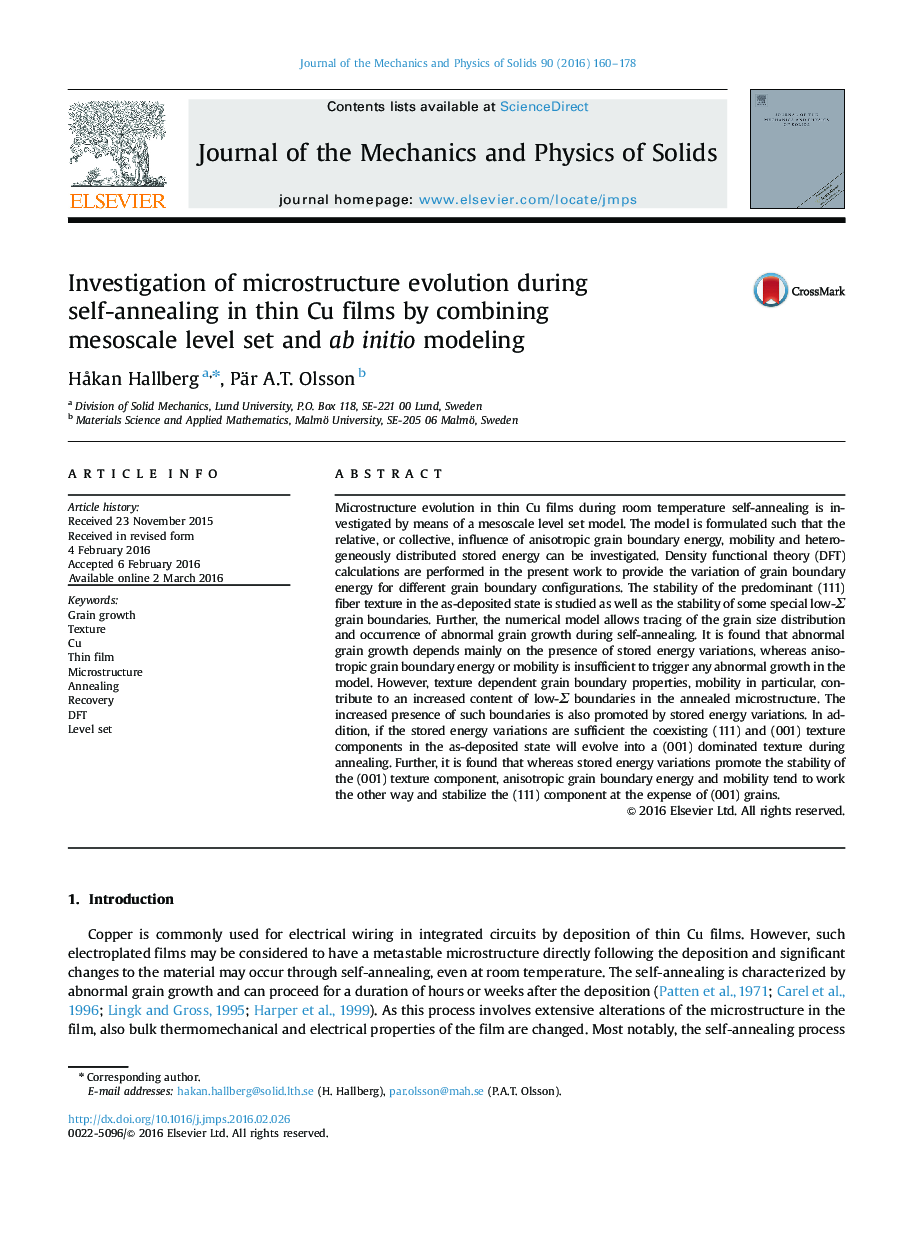| Article ID | Journal | Published Year | Pages | File Type |
|---|---|---|---|---|
| 797782 | Journal of the Mechanics and Physics of Solids | 2016 | 19 Pages |
Microstructure evolution in thin Cu films during room temperature self-annealing is investigated by means of a mesoscale level set model. The model is formulated such that the relative, or collective, influence of anisotropic grain boundary energy, mobility and heterogeneously distributed stored energy can be investigated. Density functional theory (DFT) calculations are performed in the present work to provide the variation of grain boundary energy for different grain boundary configurations. The stability of the predominant (111) fiber texture in the as-deposited state is studied as well as the stability of some special low-Σ grain boundaries. Further, the numerical model allows tracing of the grain size distribution and occurrence of abnormal grain growth during self-annealing. It is found that abnormal grain growth depends mainly on the presence of stored energy variations, whereas anisotropic grain boundary energy or mobility is insufficient to trigger any abnormal growth in the model. However, texture dependent grain boundary properties, mobility in particular, contribute to an increased content of low-Σ boundaries in the annealed microstructure. The increased presence of such boundaries is also promoted by stored energy variations. In addition, if the stored energy variations are sufficient the coexisting (111) and (001) texture components in the as-deposited state will evolve into a (001) dominated texture during annealing. Further, it is found that whereas stored energy variations promote the stability of the (001) texture component, anisotropic grain boundary energy and mobility tend to work the other way and stabilize the (111) component at the expense of (001) grains.
Graphical abstractFigure optionsDownload full-size imageDownload as PowerPoint slide
